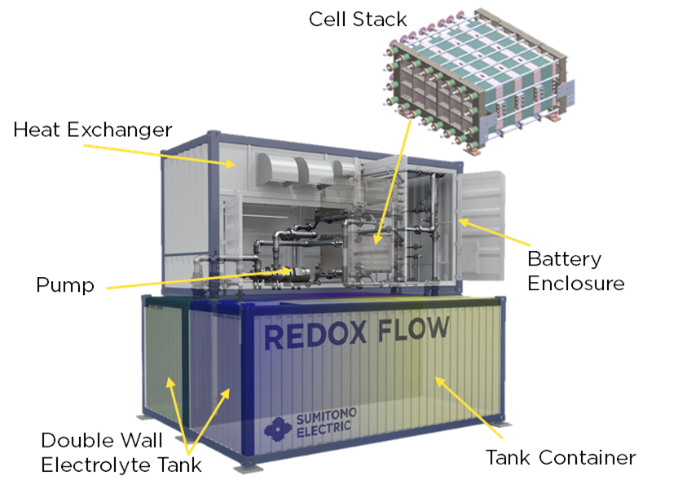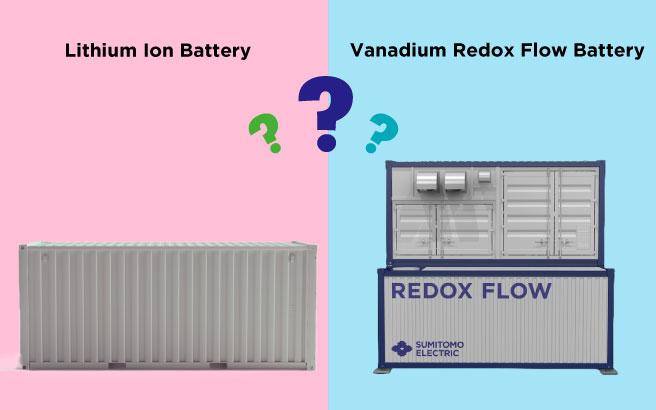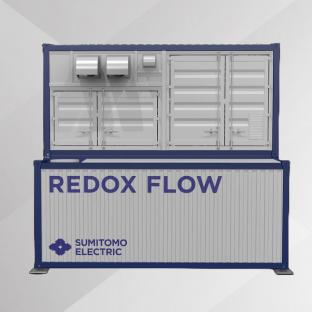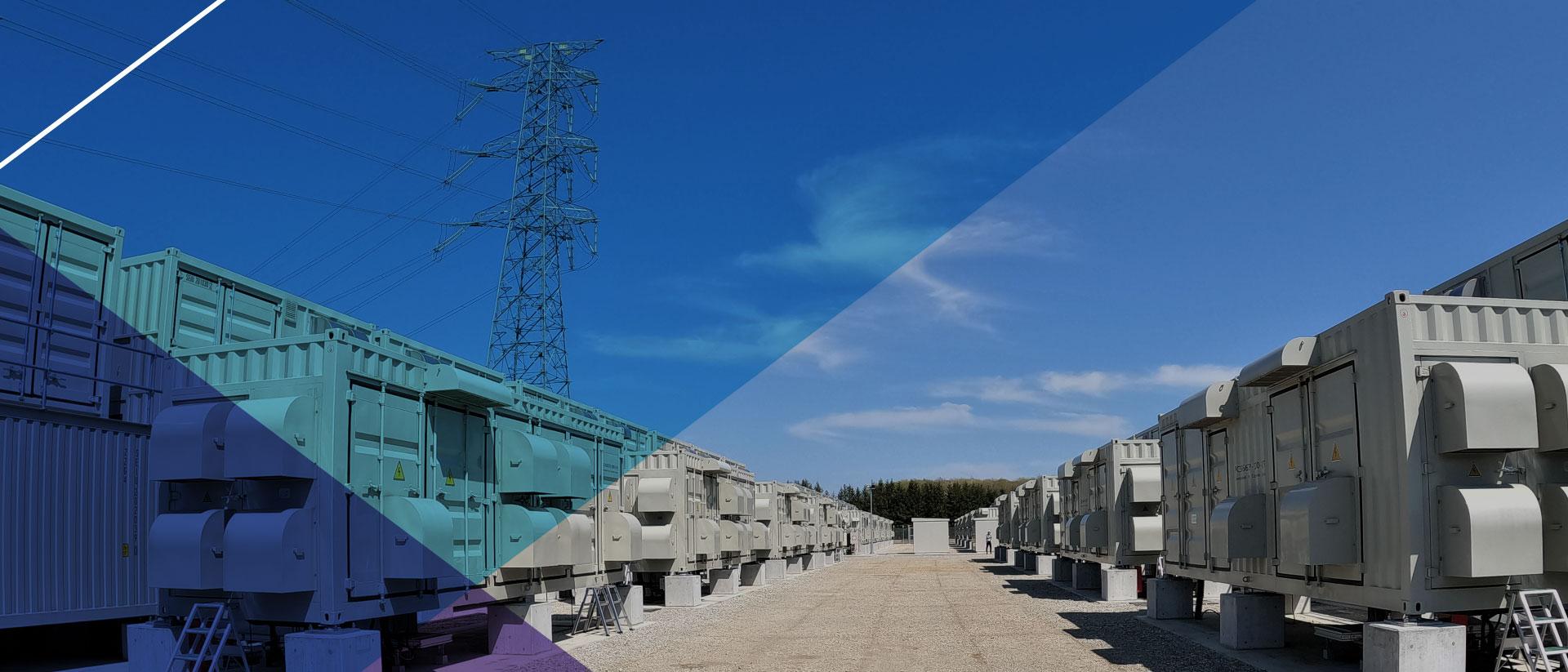
Featured Stories
Vanadium Redox Flow Batteries: A Safer Alternative to Lithium-Ion Technology
As the global push for renewable energy accelerates, the demand for safe, sustainable, and scalable energy storage solutions is at an all-time high. Two leading technologies, Lithium-ion Batteries (LiBs) and Vanadium Redox Flow Batteries (VRFBs), are at the forefront of this transition. While LiBs dominate portable devices and electric vehicles, VRFBs are emerging as a compelling alternative for large-scale, long-duration energy storage. (3 min read)

◇ Safety Under Scrutiny: The Rising Demand for Safer Energy Storage
While Li-ion batteries remain the mainstream solution for short-duration, high-density applications, their use in grid-scale storage introduces critical safety concerns. These systems are vulnerable to thermal runaway, which can result in fires or the release of toxic gases, especially when deployed in dense urban or high-temperature environments. According to the National Fire Protection Association (NFPA) and the International Fire Code (IFC), fire codes have been updated to address installation limits, fire containment, and emergency response measures for BESS exceeding 20 kWh in capacity.
Recent guidance, such as UL 9540 and NFPA 855, reflects a growing consensus among regulators to enforce stricter safety protocols. These include ventilation systems, remote monitoring, minimum separation distances, and fire suppression infrastructure. In some regions like Washington State, new building codes require detailed safety plans for facilities using lithium-based storage systems.
As a result, industry and government stakeholders are exploring alternative technologies that offer comparable performance with greater inherent safety. One such candidate is the Vanadium Redox Flow Battery (VRFB), a system that stores energy in liquid electrolytes and eliminates the risk of thermal runaway. Unlike Li-ion batteries, VRFBs are inherently non-flammable, do not degrade quickly over time, and remain stable across wide temperature ranges.
A recent Reuters article also highlighted that safety incidents have prompted Chinese authorities to consider nationwide inspections of energy storage facilities, indicating that safety will remain a top priority globally.
With regulations tightening and the grid's dependence on storage growing, safety is no longer a secondary consideration. Technologies like VRFBs, known for their reliability and resilience, are gaining interest not just for their environmental and operational benefits, but for their ability to meet the energy sector’s evolving safety demands.
◇ Understanding the Safety Differences
The fundamental safety advantage of vanadium redox flow batteries lies in their chemistry and design.
Vanadium Redox Flow Batteries

- Non-flammable Electrolyte: The water-based electrolyte used in VRFBs is inherently non-flammable.
- Thermal Stability: VRFBs operate at ambient temperatures with minimal heat generation.
- Fail-Safe Design: The physical separation of energy (electrolyte tanks) and power (cell stacks) components reduces cascading failure risks.
- No Thermal Runaway: The chemistry of VRFBs makes thermal runaway physically impossible.
- Long-Term Stability: Vanadium electrolyte remains stable over decades of use.
Lithium-Ion Batteries
- Requires Fire-Safe Design Considerations: Utilizes organic electrolytes with high energy density, which require active thermal and safety management protocols in stationary applications.
- Managed Thermal Runaway Risk: Under rare but extreme conditions (e.g., overcharging, physical damage), lithium-ion cells can undergo thermal runaway.
- Active Cooling Often Needed: Higher energy densities and heat generation require a thermal management system to maintain safe operating conditions.
- Degradation over time: Repeated cycling can lead to the formation of lithium dendrites or degradation of internal components, especially in long-duration applications.
- Safety Through Monitoring Systems: Lithium-ion systems rely on advanced Battery Management Systems to continuously monitor and control temperature, voltage, and current in real time.
◇ Recent Research Findings
According to the 2025 Solar Risk Assessment by kWh Analytics, safety concerns surrounding lithium-based BESS technologies have increased following high-profile fire incidents, even though overall failure rates have declined. The report highlights that thermal runaway remains a critical risk and that 72% of system-level defects involve fire safety components. In contrast, vanadium flow batteries, which are non-flammable and thermally stable by design, offer a safer and more predictable option for stationary energy storage applications.
According to IEEE Spectrum, VRFBs operate safely across a wide temperature range (-40°C to 80°C) without compromising performance or safety, making them ideal for extreme environments.
Recent industrial pilots reinforce VRFB’s safety profile. A 2023 project by Jan De Nul, ENGIE, and Equans tested VRFBs under harsh conditions, including high temperatures, and confirmed their safe operation with no incidents (Jan De Nul). Li-ion batteries, in contrast, face elevated risks in such conditions, often requiring advanced safety protocols to manage thermal challenges (IEEE Spectrum; American Security Project).
◇ Safety Performance Metrics
Safety Factor |
Vanadium Flow Batteries |
Lithium-Ion Batteries |
|---|---|---|
| Fire Risk | Very low, due to non-flammable aqueous electrolyte | Requires fire prevention design due to organic electrolyte |
| Thermal Runaway Potential | None | Present |
| Operating Temperature | Ambient (Sumitomo Electric VRFB: -10°C to 45°C / 14°F to 113°F) |
Requires Thermal Management |
| Toxic Gas Emissions | None | Possible During Failure |
| Electrolyte Flammability | Non-flammable | Flammable |
| Decommissioning Hazards | Minimal | Significant |
◇ Economic Implications of Safety
The safety advantages of VRFBs may also provide economic benefits:
- Potentially Lower Insurance Costs: Industry estimates suggest that safer chemistries like VRFBs could be associated with lower insurance premiums compared to lithium-ion systems.
- Simplified Fire Protection Requirements: The absence of flammable electrolytes may reduce the need for complex fire suppression infrastructure.
- Streamlined Permitting: Some jurisdictions may allow faster permitting for non-flammable systems, especially in densely populated or sensitive areas.
- Operational Cost Savings: VRFBs do not require active cooling, which could lead to reduced energy and maintenance costs over time.
◇ Conclusion
As energy storage deployments accelerate globally, safety considerations will likely play an increasingly important role in technology selection. The inherent safety advantages of vanadium redox flow batteries position them as a compelling alternative for applications where risk mitigation is essential.
While lithium-ion technology continues to dominate the portable electronics and electric vehicle sectors, the unique safety profile of VRFBs makes them increasingly attractive for stationary grid-scale applications, especially in sensitive environments or densely populated areas.
For grid operators, utilities, and facility managers prioritizing safety alongside performance, vanadium redox flow batteries represent not just an alternative but potentially a superior solution for large-scale energy storage needs.
- American Security Project. (2023). Battery Technology and the Military EV Transition. Retrieved from https://www.americansecurityproject.org/battery-technology-and-the-military-ev-transition/
- Energy-Storage.news. (2025, June 11). Growing need for BESS quality control, risk management strategies, insurer kWh Analytics says. Retrieved from https://www.energy-storage.news/kwh-analytics-bess-safety-concerns-have-risen-following-fires/
- IEEE Spectrum. (2024). Can Flow Batteries Finally Beat Lithium-Ion?. Retrieved from https://spectrum.ieee.org/flow-battery-2666672335
- Jan De Nul. (2023). Industrial-Scale Test of Vanadium Flow Batteries as Alternative to Lithium-Ion Batteries. Retrieved from https://www.jandenul.com/news/industrial-scale-test-vanadium-flow-batteries-alternative-lithium-ion-batteries
- National Fire Protection Association. Current Protection Standards for Lithium-Ion Batteries: NFSA E&S Insights. Retrieved from https://nfsa.org/2024/04/11/lithium-ion-battery-task-group
- pv magazine. (2024). Evaluating Profitability of Vanadium Flow Batteries. Retrieved from https://www.pv-magazine.com/2024/03/15/evaluating-profitability-of-vanadium-flow-batteries/
- Reuters (2023) China to conduct safety checks after battery storage fires. Retrieved from https://www.reuters.com/markets/commodities/china-may-investigate-energy-storage-plants-fire-risks-local-media-says-2024-07-08/
- NFPA. (2023). NFPA 855: Standard for the Installation of Stationary Energy Storage Systems. Retrieved from https://docinfofiles.nfpa.org/files/AboutTheCodes/855/TIA_855_23_1.pdf
- Washington State Codes (WAC 51-54A-0322). Retrieved from https://app.leg.wa.gov/wac/default.aspx?cite=51-54A-0322
- UL9540. UL 9540A Test Method for Battery Energy Storage Systems (BESS). Retrieved from https://www.ul.com/services/ul-9540a-test-method
Follow us on LinkedIn!
If you enjoyed this Feature Story, be sure to follow Sumitomo Electric U.S.A on LinkedIn. We share updates there whenever new stories are published. (Note: Sumitomo Electric Group also has a global LinkedIn account for corporate updates.)






